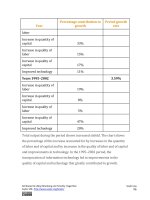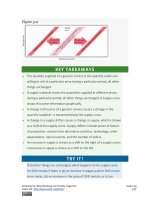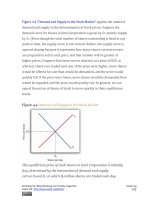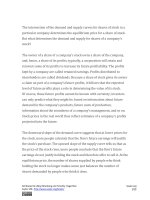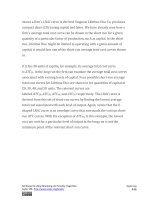Authors libby rittenberg 882
Bạn đang xem bản rút gọn của tài liệu. Xem và tải ngay bản đầy đủ của tài liệu tại đây (584.06 KB, 1 trang )
9. Explain how licensing requirements for providers of particular services
result in higher prices for such services. Are such requirements
justified? Why or why not?
10. What is so bad about price-fixing? Why does the government prohibit
it?
11. In a 1956 antitrust case against DuPont, the Justice Department
argued that the firm held a near monopoly in the cellophane market.
DuPont argued that the definition of the market should be changed to
include all wrapping paper. Why is this issue of market definition
important? (DuPont’s position prevailed.)
12. The Case in Point on the efficacy of antitrust enforcement painted a
rather negative view of antitrust enforcement. Do you agree with this
assessment? Why or why not?
13. The Case in Point on Boeing and the European Union discussed a
situation in which a foreign government, the European Union,
attempted to exert authority over a relationship between two U.S.
firms. How is this possible?
NUMERICAL PROBLEMS
In 1986, Pepsi announced its intention to buy 7-Up, and Coca-Cola
proposed buying Dr Pepper. The table below shows the market shares
held by the soft-drink firms in 1986. Assume that the remaining 15%
of the market is composed of 15 firms, each with a market share of
1%.
Company Market share (percent)
Coca-Cola
39
PepsiCo
28
Attributed to Libby Rittenberg and Timothy Tregarthen
Saylor URL: />
Saylor.org
882
